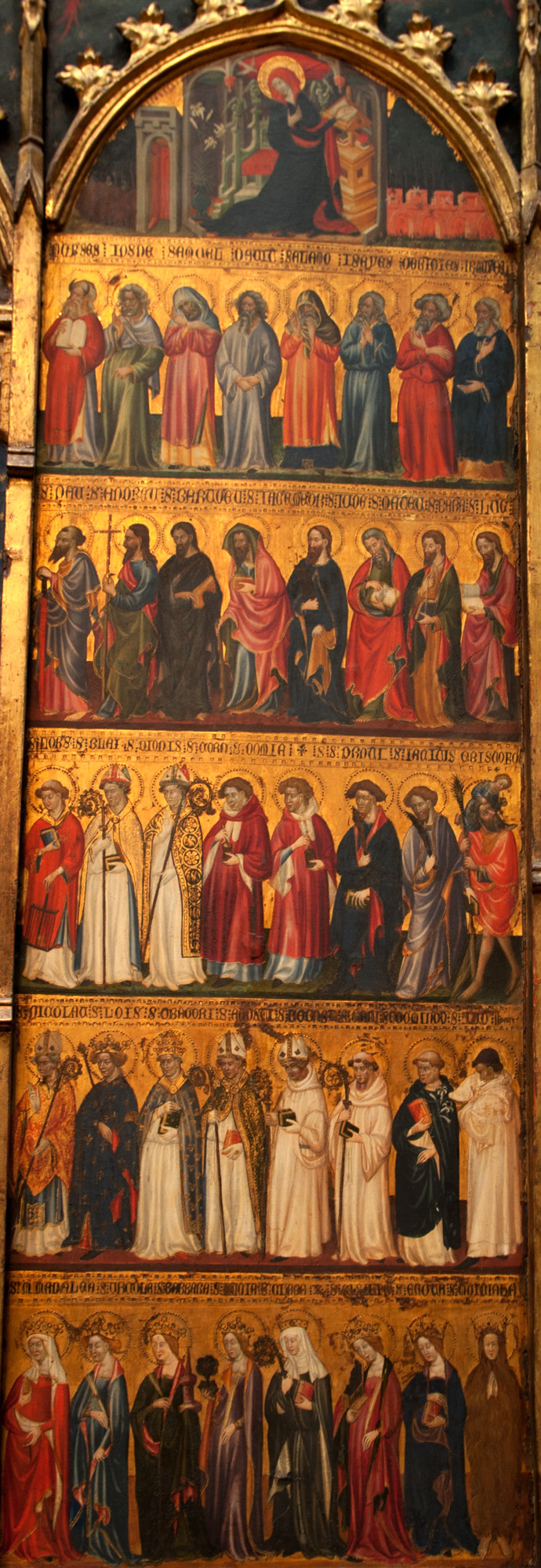
The Trinity Adored by All Saints: Detail, the right side
The top row present prophets and patriarchs from the Old Testament (left to right): Moses (tablets, horns), Joshua, Samuel, David, Solomon, Isaiah, Obadiah, and Jeremiah.
On the next row down are apostles and evangelists: Paul (sword), Philip (long cross), Bartholomew, James the Less (fuller's club), Jude (holding picture of Jesus at his breast), Matthew, Barnabas (flaming candle), Luke (gospel book). Matthew points to his gospel and is thus being included as an evangelist; in the corresponding row on the other side he is shown with a halberd, a reference to his status as apostle and martyr.
Next come eight martyred saints: Lawrence (dalmatic, gridiron), Blaise (mitre, crozier), Denis (mitre, crozier), Cosmas and Damian (physicians' garb, medicine jars), Protus and Hyacinthus (swords), Christopher (Christ Child, walking stick). The story of Protus and Hyacinthus is bound up in the life of St. Eugenia. Their beheading is mentioned in this passage in the Golden Legend.
The fourth row is for confessors (saints who were not martyred). Nicholas (mitre, crozier) is identified by his label, as is King St. Louis (crown, mantle with fleurs-de-lis). Of the others, I can identify only Dominic, second from the right in the black and white habit and carrying a stalk of lilies.
The female saints at the bottom are Mary Magdalene (ointment jar), Ursula (palm branch), Barbara (tower), Lucy (chalice?), Clare (crozier, nun's habit), Cecilia (organ), a saint with a book, and Mary of Egypt.
View this image in full resolution.
View the entire altarpiece.
Photographed at the Metropolitan Museum by Richard Stracke, shared under Attribution-NonCommercial-ShareAlike license.